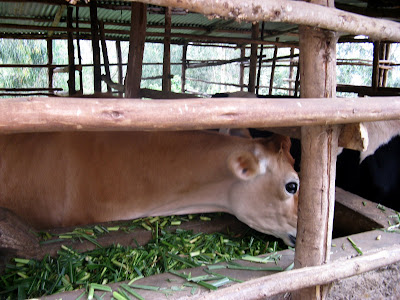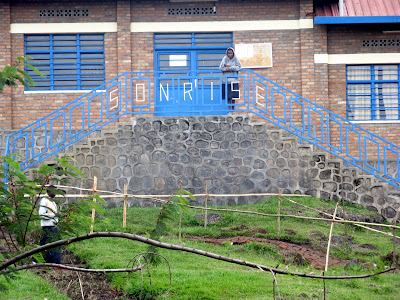
While I was in South Province I experienced Umuganda, the name for the activities on the last Saturday of every month of the year
 , fulfilling the requirement by law that every able bodied person (from the President down) must perform an established civic duty in their community between the hours of 8am until 11am after which a meeting is held to discuss community issues and to plan the project for the next Umuganda...or the last Saturday of the month. These projects can be almost anything such as helping seniors with difficult tasks, cleaning up road sides. Police are out in full force to enforce this law and it is almost ominous in how highway traffic has almost disappeared in those 3 hours. Apparently participants receive a punch card for their involvement. One could stay indoors and not be seen or helping but I'm told that if for some reason this person would require some personal help they would be chastised and denied any help they had requested.
, fulfilling the requirement by law that every able bodied person (from the President down) must perform an established civic duty in their community between the hours of 8am until 11am after which a meeting is held to discuss community issues and to plan the project for the next Umuganda...or the last Saturday of the month. These projects can be almost anything such as helping seniors with difficult tasks, cleaning up road sides. Police are out in full force to enforce this law and it is almost ominous in how highway traffic has almost disappeared in those 3 hours. Apparently participants receive a punch card for their involvement. One could stay indoors and not be seen or helping but I'm told that if for some reason this person would require some personal help they would be chastised and denied any help they had requested.Departing from Kigali was rather interesting. We walked out onto the tarmack board our plane to Entebbe, Uganda in beautiful hot sunshine. Within 5 minutes of boarding we were engulfed in a terrific thunderstorm and downpour. I looked out the window to see volumous amounts of water flowing past us on the tarmack...I actually thought the plane was moving until the captain told us that we would have to wait out the thunderstorm which then lasted about another thirty minutes.
Landing in Entebbe, Uganda is a real treat to see the expanse of Lake Victoria. It is so huge and of course is also the source of the Nile River.

The rest of my journey home was quite uneventful; from Entebbe to Addis Babba to Frankfurt and finally Toronto in approximately 23 hours I landed at 12:15pm, exactly as planned.




































